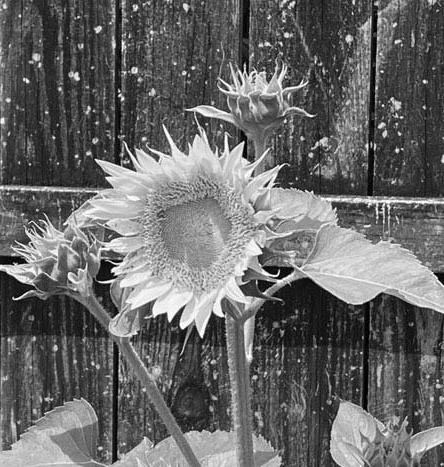ORGANIC PLOW & HOSE GARDENING | Julie Rydell
As summer’s temperatures intensify, many plants begin slow blooming during the worst of the heat. Sunflowers are just now hitting their stride.
Native sunflowers, like the ones along the side of the road, thrive in Central Texas. They don’t mind our heavy clay soil and seem rather indifferent to the dry conditions we have this time of year.
Sunflowers are annuals, plants that flower, set seed and die in one season. Annuals put out lots of blossoms as well as lots of seeds. Sunflowers provide cover for many species of wildlife and many birds enjoy their seeds, including doves that flock to sunflowers for shelter and food.
Depending on the variety, sunflowers take two to three months to blossom. Because they produce lots of seed and spread easily, they tend to grow in masses.
Sunflowers will often be the only plants growing in a spot because they have an allelopathic effect on other plants.
Allelopathy is a biological phenomenon that takes place underground where one plant inhibits the growth of other neighboring plants. Not all plants do this, but some send out chemicals through their roots to poison others.
Underground, roots need space to grow and function. Their job is to take in nutrients and water. When allelopathic plants like sunflowers are stressed – usually by heat or lack of water – the roots start to compete for nutrients and water.
During times of stress, allelopathic plants send out biochemicals through their roots that weaken the competition.
This allelopathic survival skill is part of the reason sunflowers have adapted to grow tall and in masses.
Sunflowers are said to follow the sun from east to west by way of a phenomenon called heliotropism. When the plants are young and have immature flowers, it’s true that sunflower blossoms move with the sun, but once the plants have matured, they become stationery and face east. Facing east, the plants can take advantage of the warm, early morning sun to attract more pollinators. Sunflowers are used for phytoremediation because they can remove lead and other heavy metals from polluted soil.
They absorb pollutants through their roots and the metals will accumulate in the leaves and shoots. Sunflowers can also neutralize radioactive isotopes in contaminated ground water. sunflower roots helped filter contaminated water from the Chernobyl and Fukushima disasters.
Sunflowers were first domesticated in Mexico 5,000 years ago and sunflowers were grown by indigenous people all through North America from Mexico to Southern Canada. Europeans brought sunflowers from the Americas. The Russian Empire cultivated and grew sunflowers specifically for the oilrich seeds. Russia and Ukraine produce about half of the world’s supply of sunflower seeds and oil.
Aside from growing sunflowers as a seed crop, we can grow ornamental sunflowers which grow very easily and are a favorite of kids to plant.
There is a huge assortment of ornamental sunflowers. They come in warm shades including cream, gold, yellow, orange, red, mahogany and chocolate brown.
There are all sorts of variations of those colors and even some that are peachy-pink.
Sunflowers typically grow 6 to 12 feet tall and can make great additions to your garden where you need a bit of afternoon shade. Just plant a row of sunflowers to help protect other plants from the intense summer sun.
Sunflowers do not transplant well, so it is best to sow seeds directly where you want them.

Though they have a short life cycle, sunflowers blossom and can be very bright and beautiful flowers for people to enjoy. Courtesy photo



